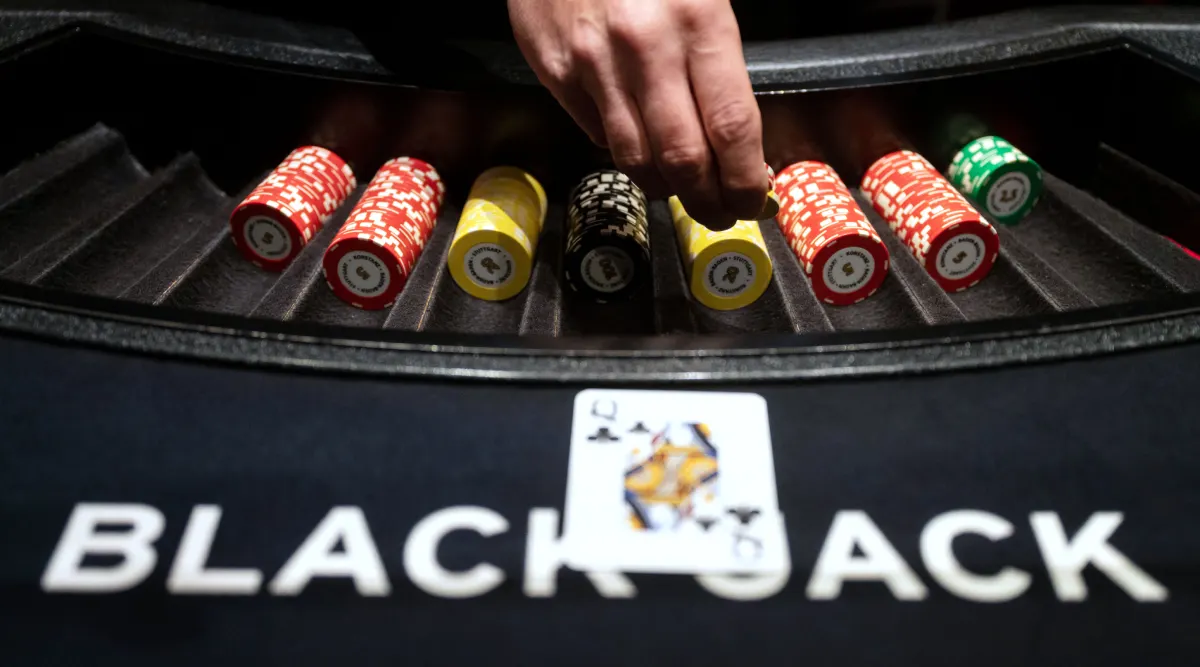
Poker has stood the test of time to become one of the top casino games and ranks top when card games are mentioned. Unique variants are churning out from the poker card decks now and then. Sometimes, you play a face-down card at a Mississippi Stud Poker, other times, it’s bending cards — it’s all about tweaking the style. Among these rollercoasters is the Indian Poker game, the Blind Man’s Bluff.
The gameplay in it is unique. Players hold up cards to their foreheads and continue playing without seeing their cards, hence the name Blind Man’s Bluff. In Indian Poker, the objective of putting your hands up high is so players see the opponents’ hands and not theirs. This could cause a buzz when a player has a strong hand like a straight. But, what is a straight in poker? It’s a five-consecutive ranked card. E.g., 5-6-7-8-9 or 10-J-Q-K-A.
In this casino news, we will find out the history of Indian Poker and its unique setup.
Brief History Of Indian Poker
Although the precise origins of the Indian Poker game aren’t known, poker casino games in the region are believed to have started in the sixteenth-century Mughal Empire. During this time, emperors were avidly involved with thrills playing cards and every form of table game due to how strategic the first card game in India was Ganjifa.
The Indian Poker game has no precise links to a particular date. But it’s said that the game started as a pastime in rural areas of India and was traveled across to the West by Britain during colonial rule. Also, the initials of this game weren’t a setup as the game we know today; instead of the 52 factorial, Ganjifa used a 96-card deck made out of tortoiseshell and, in some cases, ivory.
The Deceptive Gameplay
Indian Poker or Blind Man’s Bluff, or Squaw Poker, is a game that needs a player’s traditional skill, strategy, and a little touch of deception to win. The game is played with a casino standard 52 factorial, starting with all players being dealt one card each face-down. Then, the betting begins with only one bet round. The entertainment kicks in afterward when players have their cards; at the dealer’s signal, every player puts the card straight up to their foreheads simultaneously without seeing their cards. However, other players’ cards are revealed to all.
According to multiple online casino reviews, the fun heightens when each player attempts to be deceptive to their opponents by bluffing the value of their cards. However, this move needs deductive reasoning and observation to tell the value of your card from your opponent’s expression. Once all is certain, players can place down their cards and opt for another. The best poker players here are those with the highest-ranked cards.
In some versions of Indian Poker, each suit would rank accordingly (Spades, Hearts, Clubs, and Diamond). This helps the game rankings in determining the overall winner. So, Aces of Spades ranks second to Aces of Hearts. If there’s more than one player with two pairs, ranking suits determine the winner. If you’re wondering what a two-pair in poker is, here’s the simple answer: it involves two sets of matching cards, like 8-8 and Q-Q, that strengthen the hand.
Experience the thrill of poker without any cost. Sharpen your skills, challenge players worldwide, and enjoy endless fun. Dive into the world of online poker free!
Basic Features Of Indian Poker — Call, Raise, Fold
The Indian Poker game uniquely spins classic poker moves like call, raise, and fold. Calling means matching the previous player’s bet, a common step in the betting dance. Feeling daring? Use the Raise option to increase the bet, but remember, it must match the current wager. On the cautious side, there’s Fold – a graceful exit if the bet is too high or victory seems unlikely.
Players keep the betting drama alive until they raise, call, or fold. This phase can be quick or suspenseful. Once everyone makes their moves, the showdown steals the spotlight. Surviving players reveal their cards, and card values determine the winner.
In addition, there are no wild Jokers in this game. It’s a skill and strategy showdown with the standard card hierarchy ruling the game, just like in games of free blackjack.
Final Thoughts
In summary, Indian Poker is a fun card game where players can guess their cards without seeing them. It adds an element of excitement and surprise, making it a lively and enjoyable experience for everyone involved.
Join us on social media, and ensure yourself continuous game reviews to keep updated and improve your playing skills at the best online casino.


